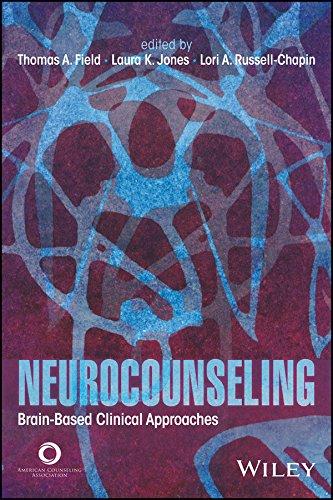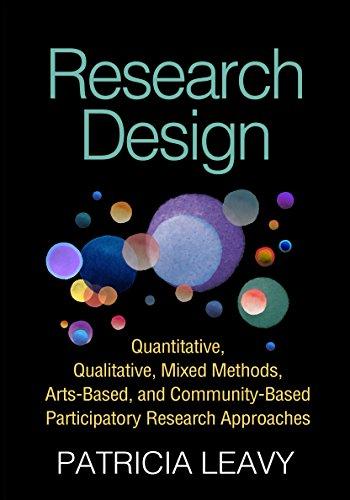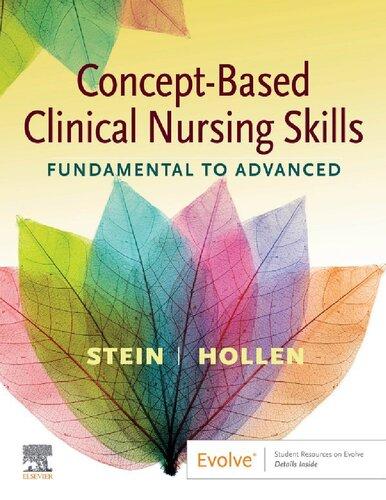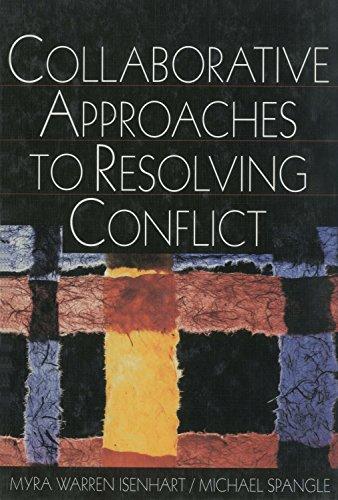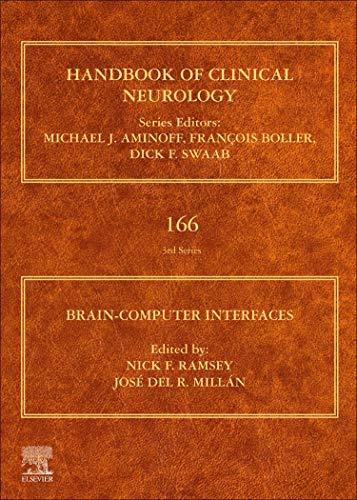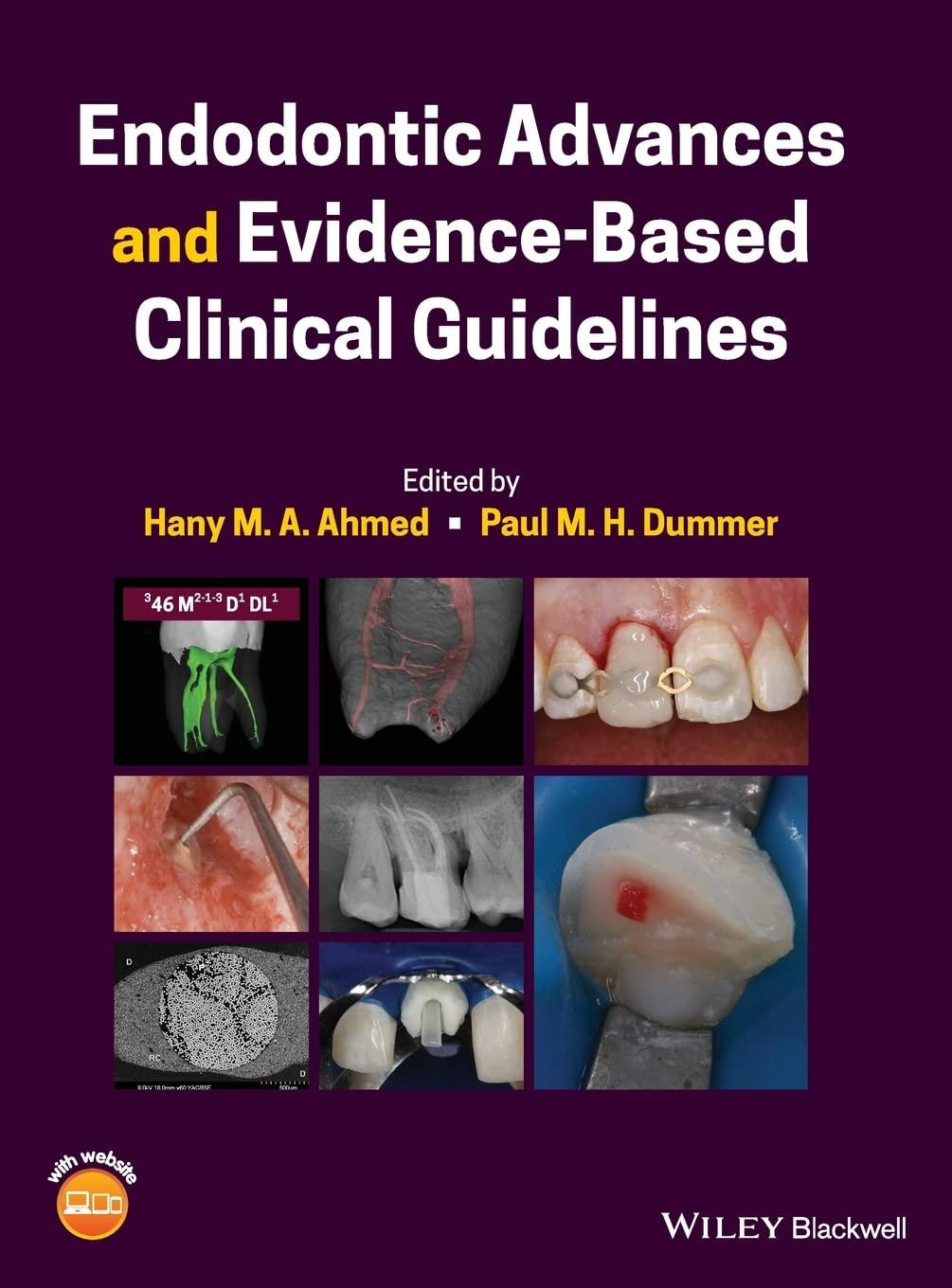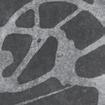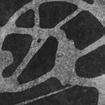About the EDITORS
The three editors of this text are the three chairs of the respective Neuroscience Interest Networks. Lori A. Russell-Chapin is the chair of the American Counseling Association (ACA) Neurocounseling Interest Network. Laura K. Jones is the chair of the Association for Counselor Education and Supervision (ACES) Neuroscience Interest Network. Thomas A. Field is the chair of the American Mental Health Counselors Association (AMHCA) Neuroscience Interest Network. We are excited about what neuroscience can bring to the counseling field and how it can be used in a manner that both honors its unique professional identity and keeps the field at the cutting edge of client care.
Thomas A. Field, PhD, LMHC (WA), LPC (VA), NCC, ACS,
is an associate professor in the Master of Arts in Counseling program at the City University of Seattle. Thom holds a PhD in counseling and supervision from James Madison University. He has 10 years of counseling experience with more than 1,000 clients in a variety of settings, including outpatient, inpatient, schools, and private practice. He maintains a small private practice to inform his work as a counselor educator. His research and clinical interests include the neuroscience of counseling practice, clinical mental health counseling and supervision, and social justice and advocacy issues in counseling. Thom has published on the neuroscience of counseling in peer-reviewed journals and has presented at national conferences on the integration of neuroscience into counselor preparation and practice. Thom is currently part of a research team (Eric Beeson, Thom Field, Laura Jones, Raissa Miller) that is studying the development of an emerging counseling theory called neuroscienceinformed cognitive behavior therapy. Thom is the current chair of the AMHCA Neuroscience Interest Network and is also a member of the ACA and ACES Neuroscience/Neurocounseling Interest
Another random document with no related content on Scribd:
to Thames. By Roman Catholics it might be regarded as a hollow pretence, and by nonconformists as a popishly tainted compromise; but by the bulk of the community it was recognised as an ark of safety, spiritual and temporal, whose bulwarks warded off the shafts of Rome as effectually as her course ran clear of the shoals and whirlpools of the sectaries. The Church of England, risen purified from the ashes of Romanism, was, or at least was accepted as, the reproduction of the church of the early Christians. It contained the ideal scheme of a perfect law of liberty—religious, social, and political; and allowed a range of thought and of speculation not to be found in any other formulated expression of Christian belief whatever. Only of papistry the Church of England was intolerant. Pains and penalties, in countless instances not one degree less cruel than “Bloody Mary” inflicted on the Protestant martyrs, did “good Queen Bess” and her successor, “gentle King Jamie,” inflict on the confessors of the older creed. To all other Christians, the Church of England extended sympathy. While her sanctuaries, retaining much of the pomp and ceremonial of Roman ritual, were served by consecrated bishop, priest, and deacon, the crypts beneath them afforded places for the simple and austere public worship of refugee Huguenots and Calvinists. Singing boys still chanted psalm and antiphon; and in the private chapel of Elizabeth, the “morning star of the Reformation,” the retention of the lighted candles on the altar betokened the belief in the reality of Christ’s presence in the sacramental bread and wine. The transubstantiation of Romanism— the consubstantiation of Lutheranism—the spiritual presence only of Christ in the elements of Calvinism—the unchanged condition of the bread and wine in the Lord’s Supper of Nonconformity and of Dissent generally, were alike set aside by the Established Church. The answer quoted by Elizabeth when questioned as to her conception of the manner of the divine presence in the Sacrament of the Lord’s Supper:—
“Christ’s was the Word that spake it; He took the bread, and brake it. And what that Word doth make it, That I believe, and take it”
was signally characteristic of the teaching of the Church of England, which claimed primitive Catholicity and unbroken Apostolical succession. The assertion was at once pious and safe, and eminently illustrates the temper of the communion which has embraced within its fold such children as Jeremy Taylor, Burnet, Nicholas Ferrar and his ascetic following, Sherlock, Laud, Stanley, Pusey, the Wilberforces; and whose rebuke to a Sacheverell was administered mainly on the score of good breeding, and, if it lost a Wesley, is not careful to cry meaculpa.
For a generation or two the interest attaching to the new-old teaching of the Church of England, and its general adopting, pretty well absorbed the attention of all classes, more especially of the upper and middle ranks; but the more the doctrines were assimilated, the more they nourished a sense of the need of temporal freedom, and roused speculation in thoughtful minds as to what was most needed and wholesome for the social well-being of the State. The old dogma of kingly supremacy had become, to say the least, unpalatable since the days of the despotic Henry VIII. The English nation had no mind to endure tyranny from the new dynasty; and many had looked with suspicion upon James Stuart, not forgetful that the blood of the papist and haughty Guises ran in his veins, and that he held with marvellous tenacity to the dogma, if in his case one might not call it the hobby, of kingly supremacy. Fond of scribbling, and endowed in his own estimation with surpassing argumentative and theological faculties, he sustained and comforted his bodily and mental timidity by pompous assertion and spiritual aphorism concerning the right of kingly control over everything the sun shone upon within his realm. The dogma of the infallibility of the Pope, James I. matched by his postulate that the king could not merely do no wrong, but that everything he did and willed was to be
applauded and obeyed. The difficulty was to impose this view upon a sufficient number of his influential subjects to make it work satisfactorily; those wise and moderate counsellors of Elizabeth’s reign, who survived into James’ time, kept him in check, and their experience of feminine weaknesses and short-comings in Elizabeth’s vigorous mind was further widened by an acquaintance with the depths of folly and of childish self-conceit into which an anointed king could fall. Such men as Lord Chancellor Cecil and John Hampden had troublesome conviction of this; and King James I., whom Sully dubbed the wisest fool that ever lived, and Henri IV. relegated to the grades of “Captain of Arts and Bachelor of Arms,” however strong himself in the comfortable doctrines of the divine right of kings, failed in arresting the growth of the life of political liberty.
With much pompous declaration however, and long-winded argument, James did his best. Warfare of words was better suited to the man who, it is said, was apt to swoon at sight of a naked sword; and when all other argument and precept failed to produce the desired impression, he took refuge in citing the example of his brother monarchs of France and of Spain. “The King of England,” said James, by the mouth of his ministers to the Commons, “cannot appear of meaner importance than his equals.” And in this creed he caused his son to be reared. An early death took the elder and promising Prince Henry from the coming troubles, and the sensitive, proud, obstinate, vacillating Charles was left to struggle with the coil of cruel circumstance already so rapidly beginning to tangle up.
As if to strengthen the effect of this mental sustenance with which Charles had been fed as regularly as he had partaken of daily material food, James sent the young prince—or at least allowed him to go—to Spain with the gay, extravagant, thoughtless Duke of Buckingham. “Baby Charles” and “Steenie,” as the King called the two, travelled incognito upon this romantic pilgrimage, stopping by the way in Paris, to sow the seeds of future mischief at the Court of Louis XIII. in the Duke’s thinly veiled admiration for Anne of Austria. The journey to Madrid however, which was originated for the end of
marrying Charles to the Infanta, defeated its own object; but Charles returned to England perfected by what he had seen in his travels—in his lesson of kingcraft. Endowed with a graceful presence, and, despite a certain coldness and reserve, with winning manners, he had a scholarly and thoughtful mind; but both nature and rearing had made him a man only of his day, or, more truly, of the time preceding it. He had no gifts of penetration or of prescience. He could not look into the future, any more than he was able to read the existing signs of the times. He had been to Spain. His eyes had been dazzled by the glitter of spoil from the New World, the splendour and pomp and punctilio of the Court of Madrid, and the magnificence of the Spanish grandees. He had seen with his own eyes the success of Loyola’s scheme of religious and political orthodoxy, and its supreme power of snuffing out obnoxious speculation, theological and scientific; but he could not discern beneath the rich embroidery of the veil its rotten foundation, which in two or three generations was to crumble like the cerements of the grave in the pure light of day, and disclose the corruption and festering beneath. He had witnessed the brilliancy of the afterglow which the memory of the adored soldier Henri Quatre had left, and it was small wonder if his mind’s eye failed to reach across the gulf of coming years to that time when lettres de cachet would make fuel for burning the Bastille, and the yellow sanbenitosof heretics should be changed for bonnetsrouges and carmagnoles. The guillotine was to reek with the blood, not alone of aristocrats, but of the sons and daughters themselves, of Liberty, Equality, and Fraternity. “The Revolution,” said one of its noblest victims, “is devouring its own children”; and the contagion of hatred against kings and queens and all their tribe spread over Europe till confusion grew worse confounded.
Looking back to those early days of Charles’s reign, the question hardly fails to suggest itself, how far the troubles of the time would have been even aggravated had he married the Infanta of Spain instead of the French princess. Protestantism in Spain had been stifled at the birth; but in France it still had healthy breathing-room,
tempering the atmosphere of Romanist belief, and influencing even the most devoted and uncompromising of Rome’s adherents. Neighboured by Switzerland, Holland, and Germany, the philosophy of Erasmus, the humanitarianism of Arminius, the teaching of Luther and of Calvin, all mingled with the stream of orthodox theological speculation, till, overflowing into fresh channels, it verged so closely and so frequently on theories of Catholic reform, that Pope Urban made a vigorous attempt to stem the tide by his bull Unigenitus, ostensibly directed against the Jansenists only. Thus, in France, thought and religious speculation were kept not merely from stagnating, but in active ferment; while in Spain, the repressive Jesuit system froze and fossilised religion. Outside passive obedience to dogma, said the disciples of Loyola, could be no salvation; but in France, such cast-iron ruling was gone for ever in Church and State. The white plume in the cap of the Huguenot-reared hero of Ivry brought loyal subjects rallying round him, as entirely as the little leaden images of Our Lady and the saints, with which the bigoted Louis XI. decorated his hat-brims, had repelled his people.
The growing Puritanic spirit in England however, which had but scanty affection for Episcopalianism itself, was not likely to draw fine distinctions. In the popular acceptation of the term, “Catholic” was identical with papist and Romanist; for, with a singular indifference, the papists had been permitted to appropriate the term. The young Queen was a Roman Catholic, greatly attached to the forms and ceremonial of her Church; bringing with her from France a train of Romanist priests and followers. Charles himself was the grandson of the woman who had died kissing the crucifix with her last breath. None of these considerations were lost sight of when the King began to ask subsidies of his faithful Commons, and showed generally a disposition to rule with a high hand.
He met with a strong resistance; and fearing the influence of Buckingham over him, the flame of accusations which had long smouldered, was fanned against the Duke, until his removal was brought about. Thus the Commons triumphed; but Parliament was dissolved.
These events took place a year after Charles’s accession; and about that time Lady Strange arriving in England, entered upon her post of lady-of-honour to the Queen. The coveted position has, before and since that time, been found to have its drawbacks, as rosebuds have their crumpled leaves; and Lady Strange seems to have relinquished her part in the Court pageantry as soon as might be, retiring to the home which one day she was so bravely to defend —Lathom House, in Lancashire.
CHAPTER III
“RES ANGUSTA DOMI.” A WHITE ELEPHANT. GATHERING CLOUDS. KEEPING A BRAVE HEART. A GRAND FUNCTION. ROYAL GIFTS. FRESH ANXIETIES. BARON STRANGE. NATIONAL GRIEVANCES. “SHORTCOATS.” A CONTRACT.
Established at Lathom, Lady Strange sent intelligence to her mother of the hope that ere long a child would be born to her; adding:—
“The length of our sojourn here is not decided upon, but if the twenty thousand crowns do not come, it will not be easy to leave the place. Your son-in-law is well, thank God, and joins frequently in the chase. On Monday, a great number of people were here, and for several days my husband has had to entertain many gentlemen. He shows me great affection; and God bestows upon us the blessing of living in great contentment and tranquillity of mind. We have some trouble with the Isle of Man; and if Château-Neuf were here, we should have offered him the charge of it. The appointment is worth a thousand francs: and that in a place where one can live for next to nothing.”
Pecuniary cares, which harassed Lady Strange all the rest of her life, were setting in. With the adoption of the Romanist faith by Henri IV., the prospects of the Huguenots darkened. The League took possession of the towns and castles belonging to the Duke de la Trémoille; the agricultural prosperity of France was again blighted by renewed civil warfare, and the tenant-farmers were in arrears with their rents and payments. The Duke was not able to sell his acres of arable and pasture land, and consequently could not send
his sister the money which was hers by right. The Earl of Derby was likewise impoverished by the loss of certain moneys which, hitherto appertaining to the male heirs of his family, had now become alienated and divided: yet upon these reduced incomings the Earl was expected still to maintain all the old state and magnificence of the house of Stanley.
The Isle of Man was, moreover, a possession of exceedingly doubtful value to its suzerain lords. The people were turbulent, and difficult to rule and to please. As a separate and independent kingdom, they claimed certain rights and privileges, and it required an Act of Parliament to settle their differences. Lady Strange’s dower would have been incalculably useful towards the settlement of all these troubles, and about the close of the year 1627 she writes:
“I am not without anxiety on many accounts; but God of His goodness will provide.” She goes on to say that her husband is much pressed for money, and how great her satisfaction would be if she were able to help him with her own dower.
“I am assured Madame, that you will understand better than I do myself the need for this; and also what a happiness it will be to me to afford consolation and help to those to whom I have been hitherto but a burden.”
Still, however, no money came, and Charlotte writes later on:
“I should be glad to know that my fortune existed not only in words, but in fact. It causes me great grief and anxiety.”
A letter, written to Madame de la Trémoille by Lady Strange on the eve of her accouchement, is strikingly characteristic of the brave and spirited, but wholly tender and womanly nature of the Lady of Lathom. Expressing constantly a deep longing to see peace established between England and France, and greatly desiring the general welfare of both her native and adopted country, feminine and domestic interests chiefly occupy her mind. Far from her own people, Lady Strange had hoped to have her mother with her during her hour of trial; but the coming of the Duchess was found to be
impracticable, and Charlotte thus writes to her sister-in-law in the December of 1627:—
“For the journey of Madame (the Dowager-Duchess), I see, dear heart, the same objections to it as you do; and though I have passionately desired her coming, I dread the discomfort and dangers to which she would be exposed; and for myself, I trust in God that He will not forsake me, although I am alone and inexperienced. But there, my dear one, I will think no more about it, trusting in God. I know, dear heart (mon cœur), that you remember me in your prayers, and how rejoiced you are for me in thinking of the hopes I cherish. Also you are assured that the blessing which Heaven may bestow upon us will be always at your service.”
At the end of January 1628, Lord Strange informs the Duchess of the birth of a son; and again, a month later, Lady Strange, writing in more detail of the important event, is critical upon the English mode of baby treatment.
“I forgot,” she says, “to tell you that he (Baby) is dark. I wish you could see the manner in which children are swaddled in this country. It is deplorable.”
Since the time of Lady Strange, custom in such matters must have considerably changed, for in these days it is the tight swathing and impeding garments of Continental babies which challenges the compassion of English mothers for the small, cramped-up bodies.
“My husband,” continues Lady Strange, “would have written to you, but he does not express himself in any language but his own. He is none the less your very humble servant.”
On the 17th April she again writes:—
“I have informed Madame of the baptism of your nephew, whom God thus graciously received on Sunday, 30th March.[4] He was carried by my sister-in-law, and attended by the ladies of four gentlemen of rank of this country. I had him dressed in white, after the French fashion, for here they dress them in colours, which I do not like. The Bishop of Chester baptized him in our private chapel, and, as you know, by the King’s name
only. Afterwards, sweetmeats were served; and at supper, the roast joints were brought to table by gentlemen of this neighbourhood, as also upon several preceding and succeeding days. The King has presented him with two gold mugs, which is his custom with those upon whom he bestows the honour of his christian name. In addition to this however, he has sent me a very beautiful present which cost two thousand crowns; the diamonds ornamenting it are very fine, and all faceted. I did not expect to receive it. The Duchess of Richmond, his godmother, has given him a large bowl and a gilded enamel knife, such as is used to remove the rolls and pieces of bread with from the table before the fruit is brought in; and to me she has given a turquoise bracelet.”
4. Old style. The Gregorian calendar was not used in England.
Previous to the birth of his eldest son, the young father, who was only twenty-two, was called to take his seat in the House of Lords, under the title of Baron Strange. This arose out of error. The fact had been overlooked that the barony of Strange formed one of the titles fallen into disheritage at the death of Ferdinand, Earl of Derby. The error led to the creation of a new peerage, which went to the house of Athol, and for several years Lord Strange sat in the Upper House, during the lifetime of his father, the Earl of Derby.
A new Parliament was now summoned; and Sir Robert Cotton, the mildest and most temperate among the prominent men of the popular party, was called to the King’s counsel table. He spoke there with wisdom and frankness, setting forth the just grievances of the nation; and in order to win its due support, impressing the necessity for redress. Sir Robert recalled those words of Lord Burleigh to Queen Elizabeth:—
“Win their hearts, and their purses and their arms will be yours.”
Concerning her husband’s summons to town, Lady Strange writes on 18th May 1628:
“I write under much anxiety; for I believe my husband goes the day after to-morrow to London. This is the more grievous, as the air there does not suit him; but God of His goodness will preserve him. As for our little one, he is very well, Heaven be thanked. I have already in two of my letters asked you for frocks for him, for he is very big for his age; and
they are needed the more that in this country children are short-clothed at a month or six weeks old. I am considered out of my senses that he is not yet short-coated. I also asked you to send hoods. I hope that all may arrive together.
“God grant that all that Parliament decides be for His glory, and for the good of the King and of the nation.”
Lord Strange did not however, go to London at this time.
“My husband,” writes Lady Strange a little later, “has not been summoned to London (June 1628). There are great disturbances there. One day all is confusion, the next everything goes well.”
It is small wonder that, to such a state of things, Lord Strange preferred the tranquillity and domestic happiness of his ancestral home.
CHAPTER IV
LATHOM HOUSE. ORM THE SAXON. THE ANCESTRY OF THE EARLS OF DERBY. A FAMILY LEGEND. “SANS CHANGER.” A STATELY OLD HOME. THE ROYAL GUEST, AND THE FOOL. THE BARON’S RETAINERS. A GOODLY “CHECKROWLE.” PUBLIC TROUBLES. THE SIEGE OF ROCHELLE. “THE VILLAIN HAS KILLED ME.” NATIONAL GRIEVANCES. AN EARNEST REQUEST.
The family of Stanley takes its surname from the lordship of Stonleigh or Stanleigh in the moorlands of Staffordshire. The appertaining house and estates had originally belonged to the de Lathoms.
Robert Fitz-Henry appears to have been the first representative of the family of Lathom. In the reign of Richard I. this Robert founded the Priory of Burscough for Black Canons, whose scanty ruins, standing in a field near Ormskirk, still tell of the great nobility and beauty of the original structure. Burscough Priory was for a long time the burial-place of the Earls of Derby; but at a later period, many of the coffins were removed to the vault of the Stanleys in Ormskirk church, which was built by the sumptuous-minded third Earl of Derby. In the reign of Edward I. the grandson of Robert FitzHenry married Amicia, the sister and co-heir of the lord and baron of Alfreton and Norton. Sir Rupert, their son, married Katherine, daughter and heiress of Sir Robert de Knowsley, that magnificent estate being thus brought into the family.
“Of this ancient and noble family of the Stanleys,” writes Edmondson,[5] “are the Stanleys of Hooton in Cheshire, from whom
descended Sir John Stanley, who, in the reign of Henry IV., obtained in 1406 a grant in fee of the Isle of Man, and from that time till February 1736 (except during the civil wars), the Earls of Derby have had an absolute jurisdiction over the people and soil.... The grandson of Sir John Stanley, named Thomas, was summoned to Parliament in 1456 as Lord Stanley; which Thomas married for his second wife Margaret, daughter and heir to John Beaufort, Duke of Somerset, and mother of Henry VII. For his services to Henry he was created, 1485, Earl of Derby. From the eldest son, Thomas, born to him by his first marriage, descended the Earls of Derby.”
5. 1785, Mowbray Herald Extraordinary.
The crest of the Stanleys is an eagle surmounting a child: and concerning it, tradition hands down the legend that the Sir Thomas Stanley who was the father of Isabel, his only legitimate offspring, had a son by a gentlewoman named Mary Osketell. Sir Thomas, who at the time of the boy’s birth appears to have been well on in years —since his wife is described as an aged lady artfully contrived that the infant should be carried by a confidential servant to a certain spot in the park, and there laid at the foot of a tree, whose branches were the favourite haunt of an eagle. Presently, in the course of their walk, came by Sir Thomas and his wife, and there they beheld the huge bird hovering with outspread wings above the infant. The crafty Sir Thomas, who loved the little creature well, feigned to his lady that he believed that the eagle had borne it hither in its talons, and launched into enthusiastic praise of the providence which had thus so miraculously preserved the babe, and placed it in their tender care. The gentle-hearted, unsuspecting lady placed implicit faith in Sir Thomas’s representations, and
“Their content was such, to see the hap That the ancient lady hugs yt in her lap, Smoths’ yt with kisses, bathes yt in her tears, And into Lathom House the babe she bears.”
The child was christened Osketell. When however, the knight felt death not very far off, his conscience began to reproach him for the deception which he had played upon his wife, and he bequeathed the bulk of his fortune and estates to his legitimate child Isabel, who was now married to Sir John Stanley. To the poor “love child,” whom the King had knighted, he left only the Manor of Irlam and Urmston near Manchester, and some possessions in Cheshire. Here Osketell settled, and became the founder of the family of Lathom of Ashbury.
This story would seem purely legendary: at all events, so far as it connects itself with Sir Thomas; since, in the Harleian MSS., there stands an account of some painted windows in Ashbury Church, near Congleton, on which is represented a figure with sword and spurs, habited in a white tabard, hands clasped. Over its head, a shield set anglewise under a helmet and mantle, emblazoned or; on a chief indented az., three tyrants; over all a bandlet gules. Crest, an eaglet standing on an empty cradle, with wings displayed regardant or, with this inscription: “Orate pro anima Philippi fil. Roberti Lathom militis.” This Philip of Lathom was uncle of Sir Thomas. Still thrown back to an earlier date, the tradition would equally hold good, and it is not beyond the bounds of possibility that some ancestor of Sir Thomas was really answerable for the crest of the Stanleys which carries with it the motto, “Sans changer.”
Lathom House was built at a very early period, when the mansions of great families were castellated and fortified to withstand the attacks of the foemen, native or foreign. It stood upon flat, marshy ground in the midst of low, gradual acclivities, its situation being best described by comparison with the hollow in the middle of the palm of the hand. Its sturdy environing walls were six feet thick, strengthened with bastions surmounted by nine towers, which commanded each other. In the centre, facing the gatehouse, which was flanked by two strong towers, was the lofty Eagle Keep tower. Externally, a moat surrounded the walls: this was twenty-four feet wide and six feet deep, full of water; and between it and the walls ran a stout palisading. The gatehouse opened into the first court; the dwelling part of the mansion was in the Eagle Tower. South and
south-westward of the house was “a rising ground, so near as to overlook the top of it, from which it falls so quick that nothing planted against it on the other side can touch it farther than the front wall; and on the north and east sides there is another rising ground, even to the edge of the moat.”
“Thus it will be seen,” writes the Rev. Mr Rutter, his lordship’s chaplain, “that over and above these artificial defences, there is something picturesque and noteworthy in the situation of the house, as if nature hereby had destined it for a place of refuge and safety.” It could not be taken by assault of battery, since the cannon placed at the top of the high surrounding hills could not damage the walls so as to effect a breach in them.
Old Lathom House bristled with towers. Eighteen in all rose from its walls. Thomas, second Earl of Derby, writing in the time of Henry VIII., thus apostrophises his ancestral home:
“Farewell, Lathom! that bright bower; Nine towers thou bearest on hye, And other nine thou bearest in the outer walls, Within ther may be lodged kings three.”
From the time of its foundation, Lathom was associated with royal memories and noble deeds. Among its heroes was Sir Thomas Stanley, Chief Governor of Ireland, the father of the first Earl of Derby, Sir Edward Stanley—
“There is Sir Edward Stanley stout, For martial skill clear without make; Of Lathom House by line came out, Whose blood will never turn their back”[6]—
and of Sir William Stanley, the brother of the first Earl. Those days of endless Yorkist and Lancastrian fighting for the crown, causing such bitterness and division between father and son, brother and brother, brought about the death upon the scaffold of Sir William Stanley. He was executed for his brave adherence to the cause of Perkin
Warbeck, whom he, with so many more, believed to be the Duke of York, said to have been murdered in the Tower by Richard of Gloucester. Sir William met his fate February 1495; and in the summer following, King Henry VII. made a royal progress northward, to spend a few days with his mother, the Countess of Derby, at Lathom. After showing his house to his royal guest, the Earl conducted him on to the leads for a prospect of the country which the roof commanded. The Earl’s fool was among the company in attendance, and observing the King draw very near the edge, which had no parapet or defence of any kind, Master Yorick stepped up to the Earl, and, pointing to the perilous verge, said: “Tom, remember Will.” The King not only caught the words, but their meaning; “and,” concludes the chronicler, “made all haste down stairs and out of the house; and the fool, for long after, seemed mightily concerned that his lord had not had the courage to take the opportunity of avenging himself for the death of his brother”[7]: thus exemplifying the vast difference that exists between a fool and a wise man.
6. Harl. MSS.
7. Burke.
The jester was an important personage at Lathom, as in all great families of the time. The homes of the nobility were each in themselves royal courts in miniature, and the quips and cranks of these “strange caperers” must have been, not merely acceptable and welcome, but in a manner indispensable to the many—from my lord himself to the kitchen scullion—when books were rare, even for those who possessed the accomplishment of reading them. The wise saws and modern instances too often wrapped up in the quips of a clever fool must have kept awake many a brave gentleman when he had laid aside baldrick and hunting horn, and the falcon slept upon his perch. Moreover, as extremes so frequently do meet, in justice to all concerned the fact should never be lost sight of that the fool so called was often furnished with a very superior if fantastic headpiece beneath his cap and bells, and in many instances was a poet of a
high order. To wit, one such a “fool” as Master John Heywood, King Henry VIII.’s jester, would be nowadays as acceptable as half a score of savants.
In a catalogue, or, as it is called, a “Checkrowle of my Lord of Darby’s householde,” drawn up in 1587, “Henry ye ffoole” is enumerated last indeed, but obviously as a very distinctive member of the establishment. At this time the steward of Lathom had three servants, the controller three, and the receiver-general three. Seven gentlemen waiters had each a servant, and the chaplain, Sir Gilbert Townley, had one. Then came nineteen yeomen ushers, six grooms of the chamber, two sub-grooms, thirteen yeomen waiters, two trumpeters, and inferior servants: making the total number to feed, one hundred and eighteen persons. As will be seen, a spiritual teacher figures in this list, in the person of Sir Gilbert Townley; but neither physician nor surgeon, nor, for that matter, a barber. Possibly, these indispensable members of a large household are both included in the person of “a conjurer,” kept in his lordship’s service, “who cast out devils and healed diseases.”
The weekly consumption of food at Lathom in the sixteenth century was an ox and twenty sheep; and in the way of liquor, fifteen hogsheads of beer, and a fair round dozen tuns of wine, yearly. In addition to the above enumerated comestibles were consumed large quantities of deer from the park, game from the woods, and fish from the ponds. For magnificence and hospitality, Lathom House in the time of the Stanleys surpassed all the residences of the north; and its possessors were regarded with such veneration and esteem, that the harmless inversion, “God save the Earl of Derby and the King,” was as familiar as household words.
And if in the days of Henry VIII. and Elizabeth this was held no treason, still less was it so in the days of Charles I. in the time of the Lord and Lady of Lathom whom peril and death itself could not render disloyal to their King, or a mockery to their motto, “Sans changer.”
This was the home in which Lady Strange spent the best part of the years of her married life, happily enough in the domestic relations of wife and mother, but hampered by the public and political complications in France, which were for ever hindering the payment of the money supplies belonging to her by inheritance, and troubled by yearly increasing anxiety for the disturbed condition of her adopted country.
Charles, from the beginning of his reign, had given great offence to the nation by the taxations which he strove to impose upon it for the carrying on of his foreign wars. This discontent was aggravated by the favour which he showed to the Duke of Buckingham. The Duke had not merely a voice in every question of State affairs, for which privilege he did his royal master the doubtful service of defending him against the Parliamentary attacks which daily gathered in angry strength, but he crowned all by aspiring to and obtaining the command set on foot for the assistance of the Huguenots against the forces of Richelieu, which were beleaguering the city of la Rochelle. Buckingham’s religious convictions were however considerably less strong than his anger against the Cardinal, to whom his behaviour had begun to give offence ever since the day when he first set foot in the French Court and had cast amorous eyes upon Anne of Austria, the beautiful wife of Louis XIII. Buckingham took his fleet to Rochelle, having persuaded Charles that the expedition would be regarded with special favour by the English nation, since it was to contend for Protestantism and Protestants against the proud Romanist arch-priest. This might in a measure have proved to be the case had the undertaking been successful; and, since there is nothing that succeeds like success, it might have turned the whole course of subsequent events for Charles. But George Villiers was not of the stuff to measure arms with Armand de Richelieu, whose axiom was that there was “no such word as fail”—and the expedition was a total fiasco. Buckingham returned to England to organise a second attempt; but while waiting at Portsmouth for this purpose, he died by the hand of the assassin Felton.
Charles was now left to bear alone the bitter complaints of his people, who had been taxed for the expenses of the fleet, the illsuccess of which had cast ridicule not only on England, but on the Protestant cause, and simply enhanced the growing triumphs of the Catholics in France. The King furthermore, was giving great offence to Protestants of all denominations by the toleration which he granted the papists. From the Independents, the growing party of the Puritans, and almost without exception from the Episcopalians, the Roman Catholics of the country met with no quarter. Many patriotic and loyal English men and women had remained faithful to the old creed, keeping spiritual and political conviction absolutely apart; but upon these, baleful reflections were cast by the foreign Jesuit party, and suspicion fell on the most unbigoted and inoffensive. Charles’s leniency towards his Roman Catholic subjects was far less the effect of any sympathy with their doctrines than that of a mistaken policy. His idea in coming to any sort of entente cordiale with them was to make terms for dispensations from the severity of the penal laws existing against them. He wanted the benevolences of them, and forced loans, for the purpose of carrying on his war against Spain, since he could not obtain the needful supplies from Parliament; and the nation objected on the double score of the illegality of such a measure, and the inadvisability of keeping up warfare with the Continent at all.
These offences on the King’s part crowned the grievances he had caused by his levy of tonnage and poundage, and the new Parliament which was now summoned inaugurated proceedings by an inquiry into the “national grievances.” In 1628 all this resulted in the bill known as the Petition of Rights, which, after some demur in the Upper House, was finally passed by the lords, and received the royal assent. This bill required the consent of both Houses to the furnishing by anyone of tax, loan, or benevolences. It claimed for the people exemption from enforced quartering upon them of soldiers and seamen. Martial law was to be abolished, and no person to be arbitrarily imprisoned.
Matters might now have improved; but Charles sprang a new mine by the tenacity with which he clung to the disputed right of tonnage and poundage. The Commons, unfaithful to their promise to look into the justice of the claim, arrived at the decision that anyone paying it should be held a traitor to his country. The offended King, calling the members of the Commons all “vipers,” once more dissolved Parliament, made peace with France and Spain, and proceeded to act upon his declaration that he would govern without the aid of Parliament.
The blame of all these disputes was laid to the Duke of Buckingham. The sanction given by the King to the Bill of Rights did little to appease the storm of discontent. Five months after the prorogation of Parliament (23rd August 1628) Buckingham was assassinated by one of his disbanded officers.
“I expect,” writes Lady Strange to her sister-in-law a month later, “that before this reaches you, you will have heard of the death of the Duke of Buckingham, who was killed by one Felton, the lieutenant of a company to whom the Duke had refused it after the death of its chaplain.
“He might have been saved, but a wish to die, and a melancholy disposition contributed to his end.
“His wife,[8] whom he loved greatly, and who is very amiable and modest, is much to be pitied. The King has shown great displeasure at the deed, and for a whole day would see no one, nor eat till ten o’clock at night. He received the news at morning service, at which he remained, and on the Sunday following was present at the sermon. He has sent word to the Duchess that he will befriend her to the utmost. You may judge what a change all this will make at Court. God grant that it may be to His glory, and for peace.”
8. Lady Catherine Manners, daughter of the Earl of Rutland.
The subsidies voted by Parliament were however levied.
“The greatest people contribute to these subsidies, and each according to his possessions,” writes Lady Strange to her mother. “My husband’s great-grandfather was taxed at four thousand francs. He possesses, however, quite three times as much money as we have, and yet we gave as much. All this is greatly to the disadvantage of the wealthy; but the people are satisfied; and since the King has not power to raise these subsidies but when Parliament permits, it will not happen every year, but only on special occasions.”
Lady Strange prefaces with these observations a new request for the payment of her marriage portion.
“If Château-Neuf has the honour of seeing you, he will be able to tell you Madame, how it injures my repute and that of my family that I have not yet had this sum of twenty thousand crowns. If my husband were not as good as he is, he would begin to grow suspicious, which, thank God, he does not. What most distresses me is that I find myself one of this household only to increase its debts and expenses; and that also several of his friends from whom he borrowed money for his journey (to Holland, on the occasion of his marriage) were pressed to ask him to pay it back, and that he could not do so is a great trouble to him, as it is to me also; for there is nothing that he hates more than not keeping his word.”
CHAPTER V
A CHAPTER OF CORRESPONDENCE
About this time a fresh trouble arose for Lady Strange, and for her mother and sister-in-law, in the defection of the Duke de la Trémoille from Protestantism. He went to Rochelle; not, however, to take part in the defence of the Huguenots against Richelieu’s attacks, but to join the besiegers. Being received into the Church of Rome by the Cardinal himself, he was at once nominated to the command of the light cavalry.
“I cannot get over my astonishment at my brother’s change of religion,” writes Lady Strange to her mother. “There has been a report of it for this long time past; and even the Queen was told that it was quite certain; but she, finding that you Madame, were included in the defection, said she believed nothing at all about it. That led me also to doubt about my brother; but God has thought fit to send this affliction upon you Madame, and upon our house. It distresses me greatly, and even more than I could have believed. The letter from him which you have been pleased to send me shows his thoughts; but I cannot believe in what he says, that ‘a worldly mind would have done differently.’ The Catholics always talk so.”
In writing to her sister-in-law, who had just given birth to a little girl, she adds:
“I honour and love you with all my heart; and that makes me doubly disturbed at the change in your husband. It has marvellously astonished me; and I can hardly credit it, but I trust in the goodness of God to change his heart. Certainly, scarcely anyone will believe that it is out of anything but a mere human consideration: and truly, when one regards only that, it does lead one to lose no time in abandoning one’s religious profession. I pity very much the pain you will suffer in not following his example; but nevertheless dear heart, I doubt not that you will resist. God give you strength above your own, and we shall see you doubly serving the advancement of His glory, since you have now no help.—I am told that if my brother could, he would have asked for my fortune: but that the law of the country did not permit it. I must confess to you Madame, that save from respect to you, I do not know what I should be driven to, by the contempt with which he treats us.”
She concludes by imploring her mother’s forgiveness of her second brother, the Count de Laval, who had taken refuge in Holland after some escapades in France.
During the sitting of Parliament, Lord and Lady Strange were in London, where she gave birth to a daughter, who died very soon after, suffocated in the nurse’s bed. For a time this accident greatly troubled her; the child, however, was a very young infant when it happened. The little boy was well and flourishing, and the mother appears to have found consolation before very long. Towards the close of the year 1629 she returned to Lathom, and no further correspondence is to be found of hers until October 1631. Then she writes in profound grief, for her mother had died, at Château Nonard, in the preceding August.
“DEAR SISTER, It would have been a consolation in my extreme affliction to have been honoured by letters from you, and above all, to know that I continue to live in your friendship, which is one of the things I most desire in this world to be honoured by; and I am sure that you will always keep it for me not that I deserve it, but for the sake of the love of her whom we mourn, since you did not doubt of the affection she bore for me; and as I have always loved you best after her, at this time, when God has taken her from us, I put you in her place, to give you all the respect, duty, and friendship which I entertained for her. God has taken her for our punishment, and to render her happy. I never liked this residence of Château Nonard, because it was so far from all her children;
but Heaven decreed that should be so, in order to detach her from earthly things. As for me, I confess that I have no longer any pleasure in them. Touching what you bid me tell you of the feelings of my brother de Laval, I did not see him until three days after the news arrived, and I saw him shed a few tears; but soon after, he was as merry as before. For me, I own that were I in his place, I should never have any happiness again; but I cannot say whether he conceals grief beneath. At all events, he shows no sorrow for the past. He only comes to see me now and again, and displays great impatience in my company, and a desire to be going again. He is so diversely spoken of, that I do not know what to believe of it all.”
This letter is dated from Chelsea, where she had been staying for some time.
At this place she gave birth to a daughter, who was baptized Henrietta Maria, the Queen probably being its godmother. About the same time, a second daughter was born to Madame de la Trémoille —Marie Charlotte.
In the month of March 1632, Lady Strange arrived in London, on her way to the Hague—probably with the object of settling the affairs of Charlotte of Nassau’s inheritance. Differences were now beginning to arise between the Duke de la Trémoille and the Count de Laval, which gave their sister great concern.
“I hope that your husband will acquiesce in the last wish of her who brought us into the world,” she writes. “For you dear sister, I do not doubt that your goodness and generosity will override all other considerations.”
The generosity and indulgence of the Duchess de la Trémoille was to be put more than once to the test by the Count de Laval.
A certain Englishwoman, Miss Orpe, with whom he had entangled himself, pretended that she was married to him, and took the name of Countess de Laval. Lady Strange was greatly disturbed at this; but her chief anxiety was always the money from France, which either did not come at all, or arrived much diminished in transit. The rents of Christmas were not paid by midsummer.
“I beg your forgiveness, dear sister,” she writes on the 2nd October 1638, “if I speak to you so freely, but I know you to be so reasonable and so just, that you cannot approve of what is not so. I have no doubt that your son has arrived safely in Holland. He will not have found it so prosperous there as usual. Pray God that he may have found the Prince of Orange in good health.”
Here the correspondence ceases for eight years—with the exception of one letter written in 1640, on the occasion of the death of Mademoiselle de la Trémoille. Letters in those troublous days frequently got lost upon the road, and those for a long time preserved in the family archives finally suffered many rude vicissitudes. These years were the most momentous ones in the life of Charlotte de la Trémoille. In those letters she made few allusions to the events which have rendered her name illustrious. She saw nothing extraordinary in what she did; simply doing the duty which came next. The duty accomplished, all her thoughts reverted to the past.
Fortunately, this grand life of a modest, noble-minded woman here takes its place in history; and the documents of the time enable us to supplement the silence of Lady Strange, now very soon to be Countess of Derby.
CHAPTER VI
OTIUM CUM DIGNITATE. THE NEW EARL. A ROYAL WATER JOURNEY TO HAMPTON COURT. “MERRIE ENGLAND.” CAVALIERS AND ROUNDHEADS. “HOUSEHOLD WORDS.” THE NEW LETTER-POST. HACKNEY COACHES. LINEN. FAITHFUL FRIENDS. A LORDLY HOME
A few years before his death, the Earl of Derby retired to a country house which he had bought, on the banks of the Dee, near Chester. Weary of the cares of life, and of the ordering of his large estate, he made all his possessions over to his son, Lord Strange, reserving to himself a thousand pounds a year for his own maintenance. In 1640 Lord Strange was appointed to share with his father in the office of Lord Chamberlain of Chester. Two years later the old Earl died; and his son succeeding him, “Madame Strange,” as her French and Dutch relatives called her, became Countess of Derby.
In the course of time, since the murder of the Duke of Buckingham, the affairs of the country had gone from bad to worse, and year by year the breach between Royalists and Parliamentarians widened. Outwardly the kingdom not only seemed to prosper, but was in a manner flourishing. Her possessions abroad were increased by new colonies, and her harbours were filled with merchant ships sailing from all parts of the world. Art and learning prospered exceedingly. In the midst of the turmoil of ribaldry and fanaticism of the extreme parties, and the smoke and luridness of battle-fields, learning and civilisation were steadily advancing. Like Archimedes, men of science, painters and scholars, worked on, some of them
